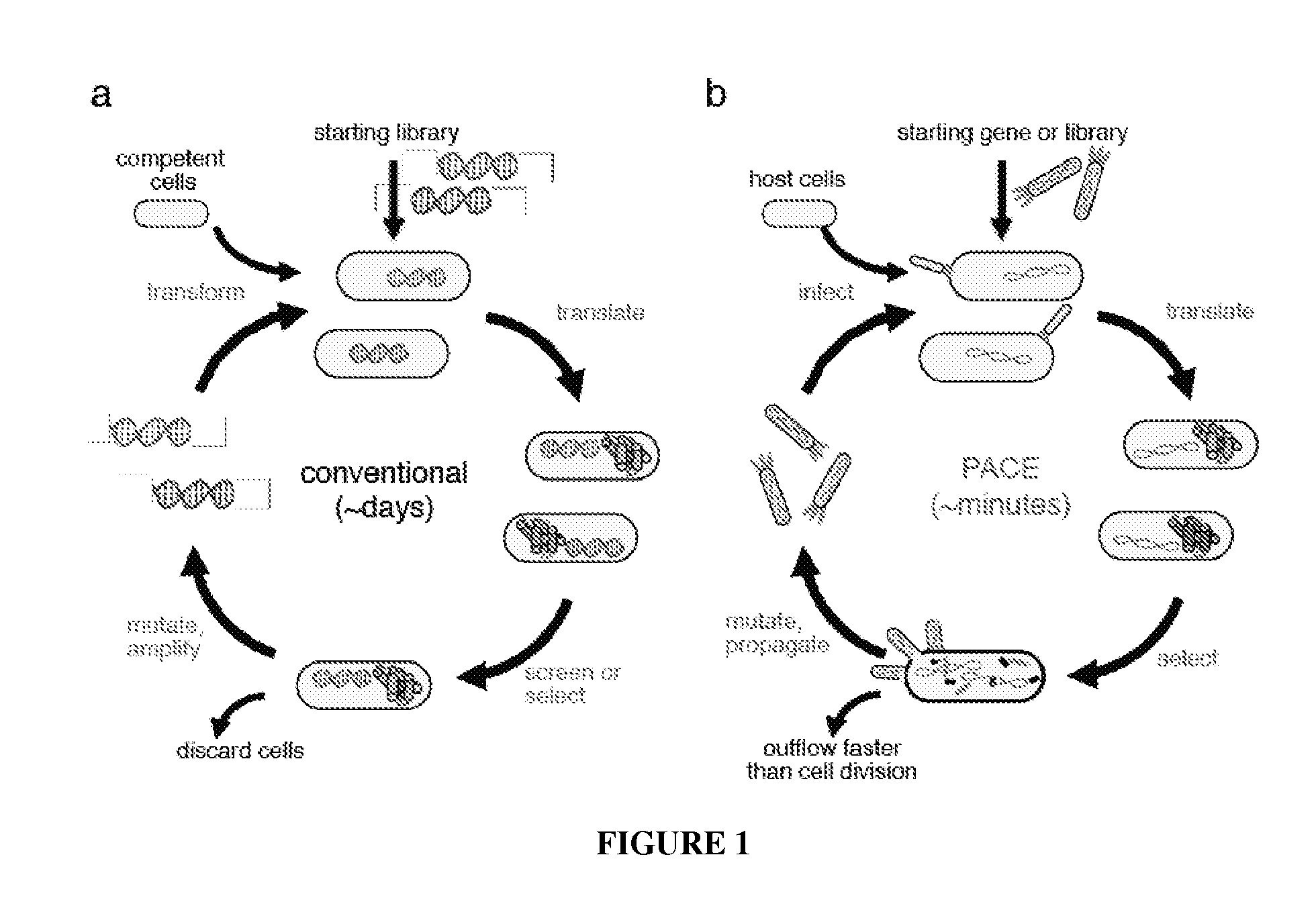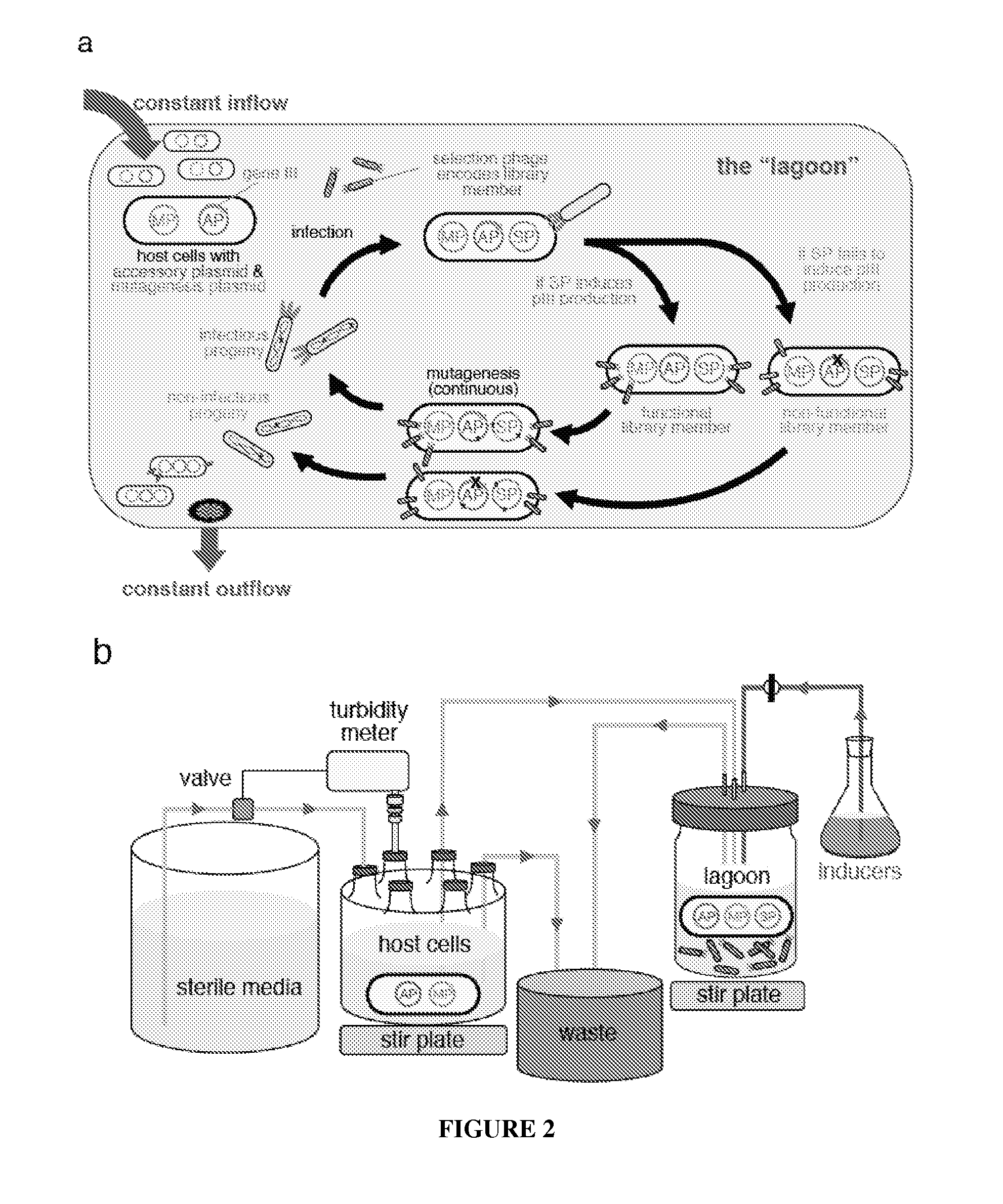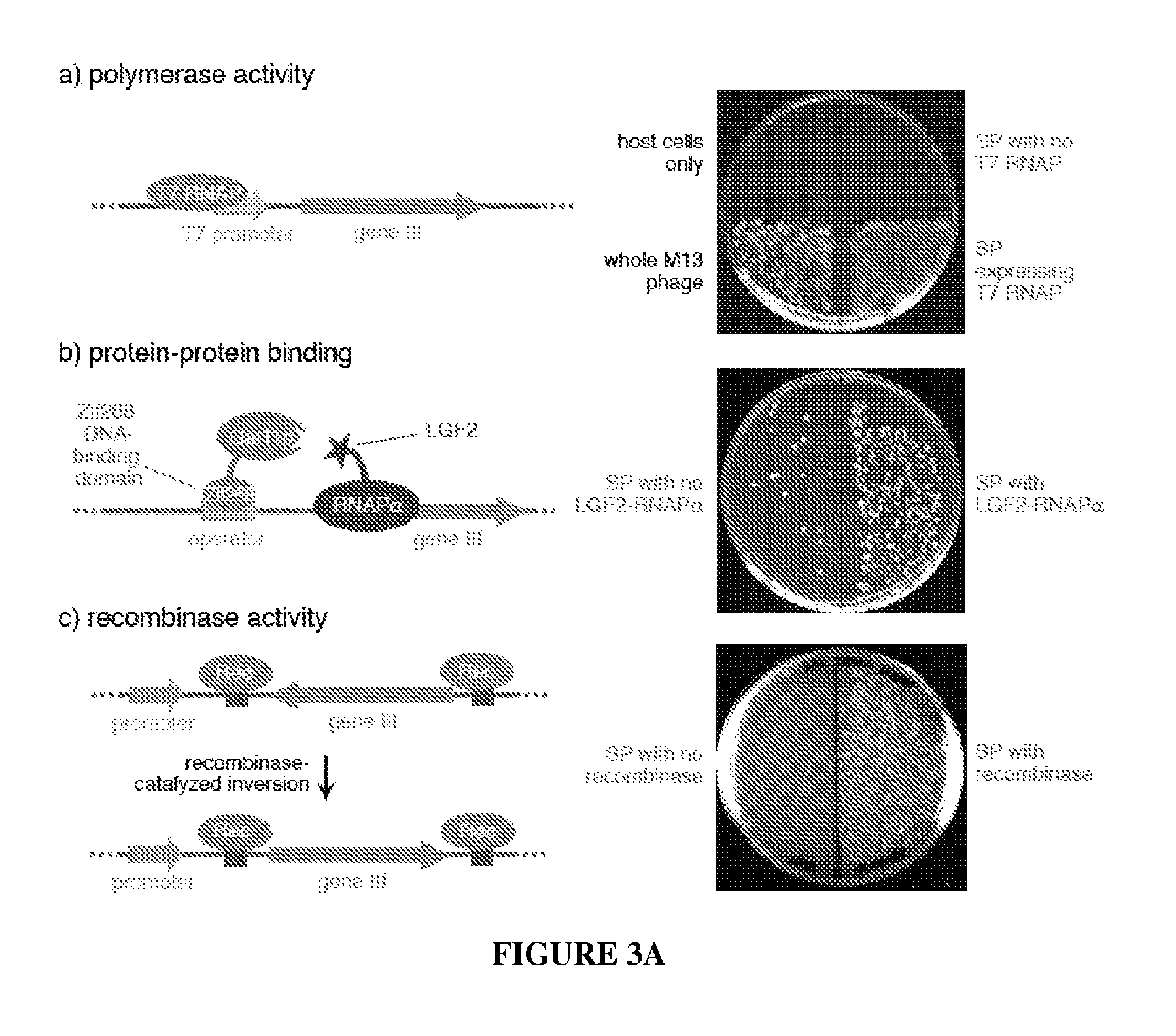Continuous directed evolution
a directed evolution and evolution technology, applied in the direction of directed macromolecular evolution, nucleotide libraries, peptide sources, etc., can solve the problem of impracticality of laboratory-based complex evolution processes, and achieve the effect of reducing the efficiency of infection
- Summary
- Abstract
- Description
- Claims
- Application Information
AI Technical Summary
Benefits of technology
Problems solved by technology
Method used
Image
Examples
example
[0149]General methods. All equipment, reagents, suppliers, and relevant catalog numbers are detailed in Table 2. All PCR reactions were performed with HotStart Phusion II polymerase. Water was purified using a MilliQ water purification system (Millipore, Billerica Mass.).
[0150]DNA cloning. All vectors were constructed by isothermal assembly cloning. [44] 5× isothermal assembly buffer contained 3 mL 1 M Tris-HCl pH 7.5, 300 μL 1 M MgCl2, 600 μL 10 mM dNTPs, 300 μL 1 M dithiothreitol, 1.5 g PEG-8000, 20 mg NAD, and H2O to 6 mL. Individual 320 μL aliquots were frozen at −20° C. Isothermal assembly master mix was prepared by mixing 320 μL 5× buffer with 1 μL T5 Exonuclease, 20 μL Phusion polymerase, 160 μL Taq DNA ligase, and H2O to 700 μL. Individual 15 μL aliquots in PCR tubes were frozen at −20° C. DNA fragments to be assembled were PCR-amplified using oligonucleotide primers designed to ensure between 30 and 40 base pairs of overlap homology with each adjacent fragment. DpnI was add...
PUM
| Property | Measurement | Unit |
|---|---|---|
| volume | aaaaa | aaaaa |
| volume | aaaaa | aaaaa |
| volume | aaaaa | aaaaa |
Abstract
Description
Claims
Application Information
 Login to View More
Login to View More - R&D
- Intellectual Property
- Life Sciences
- Materials
- Tech Scout
- Unparalleled Data Quality
- Higher Quality Content
- 60% Fewer Hallucinations
Browse by: Latest US Patents, China's latest patents, Technical Efficacy Thesaurus, Application Domain, Technology Topic, Popular Technical Reports.
© 2025 PatSnap. All rights reserved.Legal|Privacy policy|Modern Slavery Act Transparency Statement|Sitemap|About US| Contact US: help@patsnap.com



